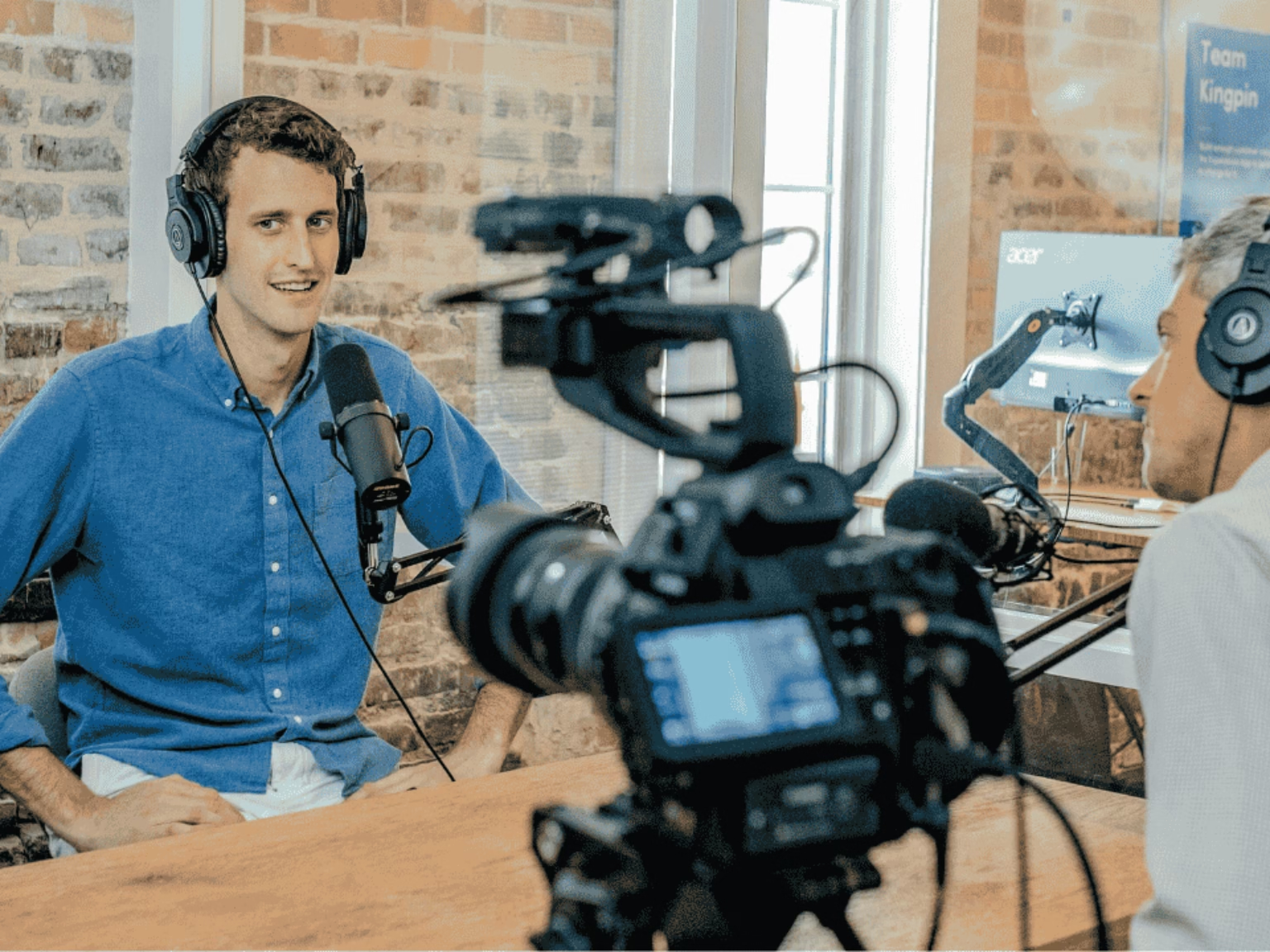Think about the last video you watched. What made it stick? Was it the message, the visuals, or the emotion? Whatever it was, that video told a story, and that story made you remember it. That’s the magic of video storytelling.
In this guide, we’ll explore what makes video storytelling so powerful, and how you can use it to engage your audience, build trust, and drive action. Whether you’re launching a new product, explaining your brand, or simply trying to make an impact, video storytelling will help you stand out.
What Is Video Storytelling?
Video storytelling is the art of crafting a narrative through visuals, sound, and structure. It’s not just about clips and music, it’s about strategy and emotional connection.
At the core of any compelling story, there are three elements:
- A protagonist (could be a person, company, or idea)
- A conflict or challenge (what they need to overcome)
- A resolution or transformation (the outcome of the struggle)
This basic structure applies whether you’re creating a customer testimonial, a brand origin story, or a behind-the-scenes look. It’s simple but powerful, and it works because it connects emotionally.
Why Storytelling in Video Works
People forget features. They remember feelings.
Video storytelling creates emotional connections. And when people feel something, they act. Whether it’s clicking a link, signing up for a newsletter, or sharing a video with friends, emotions drive actions.
Here’s why storytelling in video is so effective:
- Emotions drive action: Stories spark emotions that move people to act.
- Memory loves stories: Viewers may forget what your product does, but they’ll remember the touching story of a dad and daughter.
- Stories build trust: Real stories of struggles and triumphs resonate more than generic product pitches.
If your videos aren’t connecting, the issue is likely not the camera you’re using, it’s the story you’re telling.
Storytelling Techniques That Actually Work
Great video storytelling doesn’t require fancy effects or huge budgets. The most effective techniques are simple but powerful.
Here’s what works every time:
1. Start with the End in Mind
Before you write a script or plan a shot, ask yourself: What do I want the viewer to feel or do after watching this video? This outcome becomes your guiding principle.
If you want viewers to trust your brand, build credibility throughout the story. If the goal is to show the transformation your product delivers, let that outcome shine. Every decision, from script to final edit, should support that goal.
Tip: Avoid videos that leave viewers wondering, “So what?”
2. Use Real People
Nothing builds trust like authenticity. Real people, whether they’re customers, employees, or founders, resonate far more than actors.
Why?
- People connect with people, not brands.
- Real voices feel unscripted, even if they’re guided.
- Personal stories are more memorable than a list of product benefits.
3. Show, Don’t Tell
Instead of saying “we’re innovative,” show how your team innovates.
- Show the process: Walk viewers through a behind-the-scenes look.
- Show breakthroughs: Highlight client success stories or creative breakthroughs.
- Use visuals: Use motion graphics or animations to simplify complex ideas.
4. Keep It Focused
The most common mistake in video storytelling is trying to say too much. Stick to one story, one character, and one key point.
A focused story is more impactful. Trying to be everything to everyone dilutes your message.
5. Use Music and Pacing to Support Emotion
Music shapes the emotional tone of your video:
- Slow tempo builds tension or seriousness.
- Fast cuts with upbeat music energize the viewer.
- A soft piano under a voiceover can add warmth or reflection.
Pacing works similarly. Don’t rush through emotional moments, let them breathe. But don’t linger where there’s no emotional payoff either. The combination of sound and pacing will shape how the audience feels long before they analyze the content. For more help connect with Video production services Toronto for a better understanding of Music for your Video storytelling.
Tips to Improve Your Storytelling Videos
Bring your video storytelling to life with these actionable tips:
1. Use a Hook
You have 5 seconds to grab attention. If viewers don’t care in the first few seconds, they’ll scroll away.
Start with a surprising question, a bold visual, an intriguing statement, or an emotional facial expression. Once you hook them, you can guide them through the rest of the story.
2. Cut Anything That Doesn’t Serve the Story
Every second of your video should serve the story. If it doesn’t, cut it. This includes repetitive points, unnecessary background, or long intros.
Viewers are here for the story, not the editing. Be ruthless in trimming what doesn’t move the narrative forward.
3. Add Subtitles
Over 80% of social video is watched on mute. If your video isn’t making sense without sound, you’re losing half your audience.
Subtitles increase accessibility and help viewers retain your message, especially on mobile.
4. Use Jump Cuts Wisely
Jump cuts are a great way to keep your video dynamic and speed up pacing. They cut out dead space and make the content feel fresh and engaging.
Don’t overdo it, though. Jump cuts should feel natural, not jarring.
5. Test It On Someone Cold
Before you publish, show your video to someone who hasn’t seen it before. Ask them:
- Did they understand the message?
- Could they explain it back to you?
- Did they stay interested?
If your video only makes sense to the people who made it, it’s not ready yet.
6. Don’t Aim for Viral
Aim for clear and real. Not every video needs to go viral. Focus on making an impact:
- Did it drive clicks to your site?
- Did it generate leads?
- Did people share it within their network?
Great stories don’t need millions of views. They need to resonate with the right audience.
Real-World Video Storytelling Examples
Let’s look at some powerful examples of video storytelling:
1. Google – “Reunion”
In this emotional ad, two childhood friends are reunited through Google Search. There’s no product demo, just pure emotion. The brand stays in the background, letting the story take the spotlight.
2. Apple – “The Underdogs”
This story follows a group of office workers with a big idea. They face hurdles, but with humor and heart, they create something incredible. The focus is on the team, not the tech specs.
3. Dove – “Real Beauty Sketches”
Women describe themselves to a sketch artist, then strangers describe them the same way. The results are striking, and the message is clear: real beauty is often more than skin deep.
Storytelling Structure You Can Steal
Need a repeatable framework for your videos? Here’s a simple template:
- Start with a relatable problem
- Introduce your main character (could be a customer, employee, or founder)
- Show the conflict or challenge
- Present your solution
- End with an emotional payoff or call to action
This structure works for brand origin stories, customer testimonials, product launches, and more.
Mistakes to Avoid
Even the best stories can fall flat if the execution is poor. Here are five things to avoid:
- Too much product, not enough story
- No clear message
- Stiff scripts
- Ignoring post-production
- One-size-fits-all content
Storytelling for Different Business Goals
You can use video storytelling at every stage of your customer journey:
- For Awareness: Share your origin story or mission to align with viewers’ values.
- For Consideration: Highlight pain points and how your product solves them with customer success stories.
- For Decision: Use before/after comparisons to build trust.
- For Retention: Showcase new features with real-user demos, or spotlight company culture.
Adapting Stories Across Platforms
Different platforms require different approaches. Here’s how to tailor your video storytelling:
- YouTube: Best for long-form stories with detailed arcs.
- Instagram: Quick cuts and captions for emotional impact.
- LinkedIn: Focus on thought leadership and company culture.
- TikTok: Go for authenticity, quick energy, and behind-the-scenes footage.
Final Thoughts
Video storytelling isn’t just about showing what you do. It’s about explaining why it matters to your audience. Great stories connect with people on an emotional level, building trust, memory, and action.
But here’s the thing: great storytelling doesn’t happen by accident. It requires strategy, structure, and expert execution. That’s what we do at Enter Productions. For 17 years, we’ve been shaping stories that not only connect but drive results.
Ready to tell your story? Let’s create your next video together. Reach out for Video Production Services Mississauga to start crafting something unforgettable!







